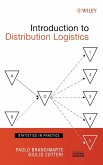"Thinking Outside the Box" has become a popular and well recognized area of interest. For whatever reason, people seem to be intrigued by the idea that they may be able to think outside the box and thereby accrue the following benefits:
- Develop a better solution
- Beat the competition
- Climb the corporate ladder more quickly
- Achieve and demonstrate more powerful mental prowess
- Improve skills as a manager
- Be more creative in solving problems both at work and at home.
Nine innovative methods to think outside the box and solve complex system problems
Managing Complex Systems provides specific tools and guidance needed to be a more creative and innovative thinker. Following the author's methodology, the reader will be better able to devise and implement nontraditional solutions to seemingly intractable complex problems. By challenging the reader to think in new and creative ways, the book offers a road map to success, whether measured in terms of competitive advantage, greater market share, improved productivity, or higher profits, all based upon better solutions to difficult problems.
The first four chapters set the foundation for creative thinking by exploring the nature of large-scale systems and complexity, thinking inside and outside the box, and examples of how an inventive mind solves problems in both management and scientific domains. Subsequent chapters address nine focused methods that the author has formulated to help the reader think outside the box:
_ Broaden and generalize
_ Crossover
_ Question conventional wisdom
_ Back of the envelope
_ Expanding the dimensions
_ Obversity
_ Remove constraints
_ Thinking with pictures
_ Systems approach
Real-life examples are provided for each method that demonstrate how the approach enhances problem solving and decision making in system development and management. Following the discussion of the nine methods, the author examines group decision making as well as additional creative thinking procedures devised by other researchers, including references that assist in exploring these methods in greater detail. The author ends with a wrap-up chapter that includes a test to help readers practice their tendencies toward creative thinking skills and action with respect to solving real-world problems.
The nine methods discussed in this book have broad applicability and can be used successfully by managers with a wide range of responsibilities in business and technology. For anyone who is tired of the same old approach with the same old results, this book is essential reading.
- Develop a better solution
- Beat the competition
- Climb the corporate ladder more quickly
- Achieve and demonstrate more powerful mental prowess
- Improve skills as a manager
- Be more creative in solving problems both at work and at home.
Nine innovative methods to think outside the box and solve complex system problems
Managing Complex Systems provides specific tools and guidance needed to be a more creative and innovative thinker. Following the author's methodology, the reader will be better able to devise and implement nontraditional solutions to seemingly intractable complex problems. By challenging the reader to think in new and creative ways, the book offers a road map to success, whether measured in terms of competitive advantage, greater market share, improved productivity, or higher profits, all based upon better solutions to difficult problems.
The first four chapters set the foundation for creative thinking by exploring the nature of large-scale systems and complexity, thinking inside and outside the box, and examples of how an inventive mind solves problems in both management and scientific domains. Subsequent chapters address nine focused methods that the author has formulated to help the reader think outside the box:
_ Broaden and generalize
_ Crossover
_ Question conventional wisdom
_ Back of the envelope
_ Expanding the dimensions
_ Obversity
_ Remove constraints
_ Thinking with pictures
_ Systems approach
Real-life examples are provided for each method that demonstrate how the approach enhances problem solving and decision making in system development and management. Following the discussion of the nine methods, the author examines group decision making as well as additional creative thinking procedures devised by other researchers, including references that assist in exploring these methods in greater detail. The author ends with a wrap-up chapter that includes a test to help readers practice their tendencies toward creative thinking skills and action with respect to solving real-world problems.
The nine methods discussed in this book have broad applicability and can be used successfully by managers with a wide range of responsibilities in business and technology. For anyone who is tired of the same old approach with the same old results, this book is essential reading.








